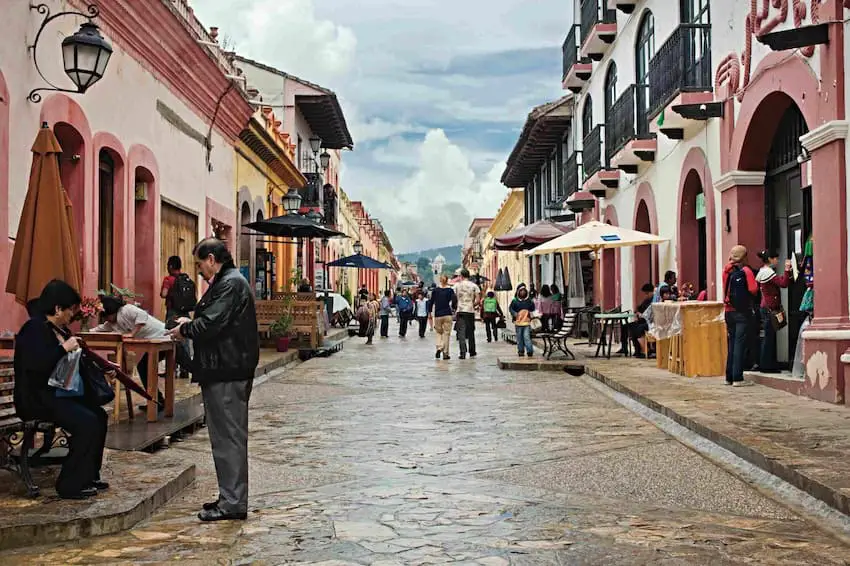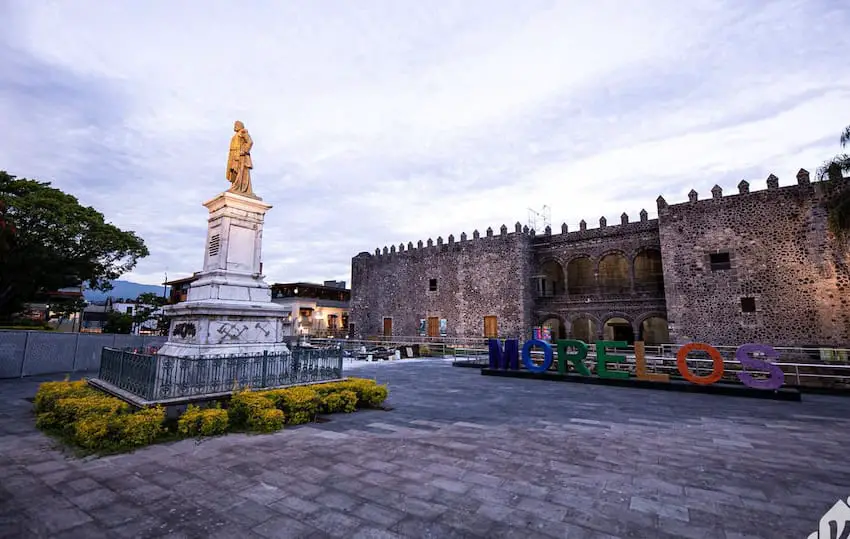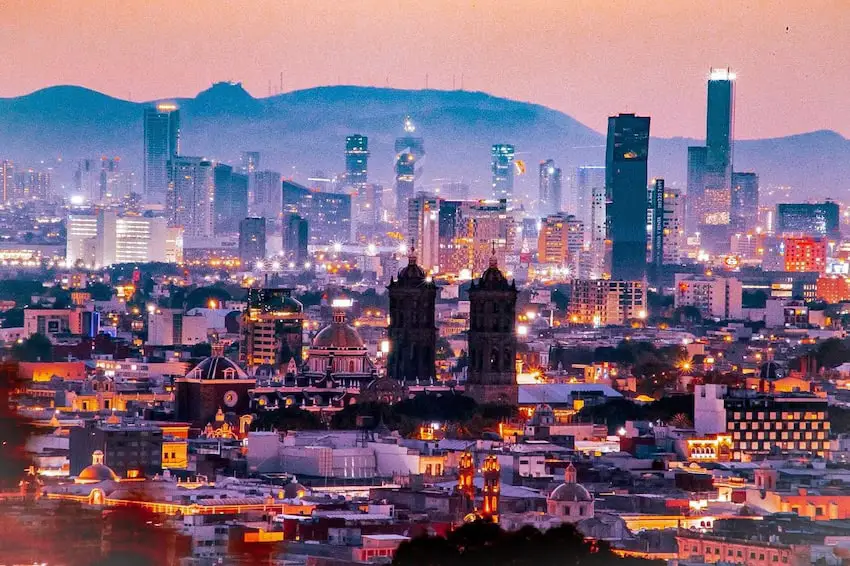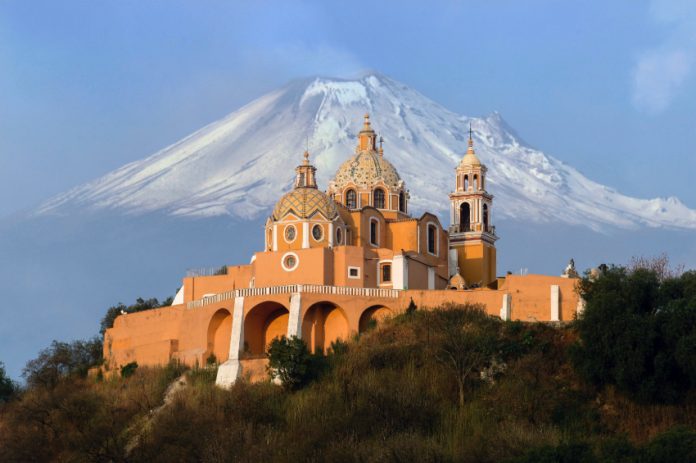Getting high is part of this week’s review of three inland Mexican cities and their surroundings as our Where to Live in Mexico 2024 Guide rumbles onward. All three locations sit at over 5,000 feet, with two exceeding 7,000 with a spectacular backdrop of towering volcanoes. We’ll focus on two historic and cultural powerhouses in the states of Morelos and Puebla, before venturing into the Maya heartland in astonishing Chiapas state.
Although none of these locations tend to get much attention on “best places to live” rankings, they are among Mexico’s most impressive destinations. Morelos and its capital, Cuernavaca were once a beacon for Americans living in Mexico, while neighboring Puebla state has been a crossroad for humanity since ancient times. Southerly Chiapas has deep ties to Central American traditions that continue to color its personality. When it comes to overseas living amenities, drawing similarities across settings is not this week’s theme.
This trio will require Spanish language skills, acceptance of urban challenges and a realization the sum of each state is greater than its parts. All three ooze “real Mexico.” It comes at you in ways subtle and profound: pivotal events of Mexican history unfold, side-by-side with the daily realities of some of Mexico’s most stubborn development challenges.
San Cristóbal

You can’t go much further south and still call yourself a “Mexpat” than Chiapas and its second-most-famous cultural touchstone, the city of San Cristóbal de las Casas — I reserve the number one-slot for Mexico’s premier archaeological site, Palenque. San Cristóbal may be more a side trip from your more established Mexico living foothold: a respite from whatever conditions afflict your current Mexican address. It’s a wonderful place to “get away to,” where you can witness centuries-old customs, 16th century Spanish architecture, colorful markets, some tourism-born gentrification and all the ways that Maya civilization endures.
Crisp, woodsmoke-scented air wafts over the city of San Cristóbal. Communities across Chiapas confront environmental violations, inter-community conflict, narco incursions and Mexico’s highest levels of poverty. It’s the country’s poorest state economically but its richest in Indigenous culture and natural resource diversity.
Connections here are dependent on the Tuxtla Gutiérrez International Airport, an hour’s drive away. San Cristóbal spawls across a flat mountain valley with surrounding hillside communities, most of which are impoverished. With a population of 216,000, it still feels like a village. San Cristóbal’s low-slung houses and stone historic buildings, two plazas and green spaces spread across an easy-to-navigate grid of colonial streets. It’s one of Mexico’s most picturesque places, invaded on weekends by Mexico City millennials, Europeans and a smattering of culture-seeking Americans. Coffee lovers will rejoice, and surrounding village day trips and scenic hiking will enrich your weekly calendar.
Living here means getting used to the altitude and cool winter nights, shopping like a local and observing a daily cadence more Guatemalan than Mexican: Chiapas only became part of Mexico in the 1840s. It’s safe at all hours, in addition to being a very walkable town with a low cost of living — you can find furnished home rentals under US $500 per month. You’ll note fewer medical care options, and San Cristóbal’s street vendors are known for their tenacity. And yes, there is jarring poverty to confront in some settings. But living here is inexpensive — $1,500 a month for a couple is very achievable. Cabs are extremely affordable and the whole city can be walked from end to end in under 30 minutes, so you won’t need a car.
Cuernavaca

Morelos state, Mexico’s third smallest, is another of those places bursting with historic, natural and cultural assets packed into a tiny area — Morelos is the country’s 30th smallest state (behind only Tlaxcala and Mexico City itself). Cuernavaca is the state capital, and its temperate climate, proximity to Mexico City and stunning sites — think Las Estacas, Tepoztlán, Xochicalco and the Zempoala lagoons — have drawn famous residents for centuries, from jazz greats Gil Evans and Charles Mingus to film stars like María Félix and Barbara Hutton. The city’s heyday ended in the early 2000s, as crime drove Cuernavaca’s foreign and Mexican elite to seek safer surroundings. This has, happily now mostly changed and Cuernavaca is back on the up once again.
With public safety improvements allowing a comeback, Morelos is compact enough to explore adopting a village and then conveniently access big-city amenities should you need them. You’ll still face some weekend congestion from CDMX, and Cuernavaca’s impossible geography means getting around the city is challenging. Consider coming here first to study Spanish; That’s what I did in 1979, and it changed my life — there’s a highly recommended language school for those looking to immerse themselves in the language.)
In all though, Cuernavaca is reinventing itself as a playground for Mexico City elites who want a green space to retreat to on the weekends, and life here reflects that. As a result, the city is rated a very respectable 4.0. Private schools are setting up shop, and access to a variety of activities — from playing soccer and rugby, to skydiving, to opera and the very enjoyable lakeside town of Tequesquitengo — can all be enjoyed with minimal travel time. Modern shopping is very simple, with a range of big box stores identical to those found in nearby Mexico City and while it lacks an airport, it is ideally located for Mexico living in all its quotidian glory.
Puebla

The city and state of Puebla might be your best choice out of this week’s trio for urban and rural living. Not customarily adopted by foreigners — other than the large German colony of VW and Audi managers — Puebla city lies less than two hours east and south of Mexico City.
Puebla is full of life, movement and memory. A rich Indigenous soul, the legacy of the Spanish Conquest, the memory of Mexico’s most epic battle against French invaders and modern expressions of art, culture and contemporary avant-garde city life make this an excellent choice for the first-time visitor and residents.
Puebla’s irregular, mountainous shape allows it to somehow border seven of Mexico’s most culturally endowed states: Veracruz, Oaxaca, Guerrero, Morelos, México state, Tlaxcala and Hidalgo. A human and cultural corridor for millennia, the Valley of Puebla linked Mexico’s Gulf Coast cultures — including the Olmecs, Mayas and Totonacs — with those of the Mexico highland interior. The state boasts 12 Pueblos Mágicos, 11 climate zones, 217 municipalities, five significant Indigenous populations and an “always with you” backdrop of four towering, snow-capped volcanoes that is breathtaking to behold.
Puebla city is Mexico’s most agreeable urban landscape, home to almost three and a half million, but without the clogging traffic and urban chaos that characterize Mexico City. Its Historic Center — a Unesco World Heritage Site — has hundreds of cataloged historic buildings, English-language interpretive signage, museums, clean streets and ample public parking. The compact downtown is well preserved and conveys a distinctive decorative and architectural impression that sets it apart from other Mexican cities, with the use of Spanish-inspired Talavera tiles as exterior accents.

Puebla is a gastronomic delight for its regional cooking, but note it’s among Mexico’s most socially conservative big cities. Puebla International Airport can get you back to the United States but offers limited domestic flights, so you may rely on a 90-minute journey to the Mexico City airport for domestic air connectivity.
Popular neighborhoods include La Paz, Las Ánimas and the modern Angelópolis, which is close to universities, shopping, modern hotels, hospitals and the International Museum of the Baroque. Nearby Cholula is another viable option.
The biggest question you need to settle before settling here: whether you can live at 7,000 feet. Many older folks can’t, and what a shame to not enjoy a place that literally takes your breath away.
The ratings
A full breakdown of our rating system can be found here.
![]()
What did we get right? What do you disagree with? Let us know in the comments.
You can see more of our Where to Live in Mexico 2024 series here, including ratings for Yucatán, Oaxaca, Quintana Roo, the Baja California peninsula, Jalisco, Pacific trio of beachside cities and three major Bajío metropolitan areas.
Author Greg Custer lives in Mexico. He’s worked for over 40 years in international tourism, educating travel advisors around the world about Mexico and other Latin American destinations. He helps folks explore Mexico for living at www.mexicoforliving.com.
